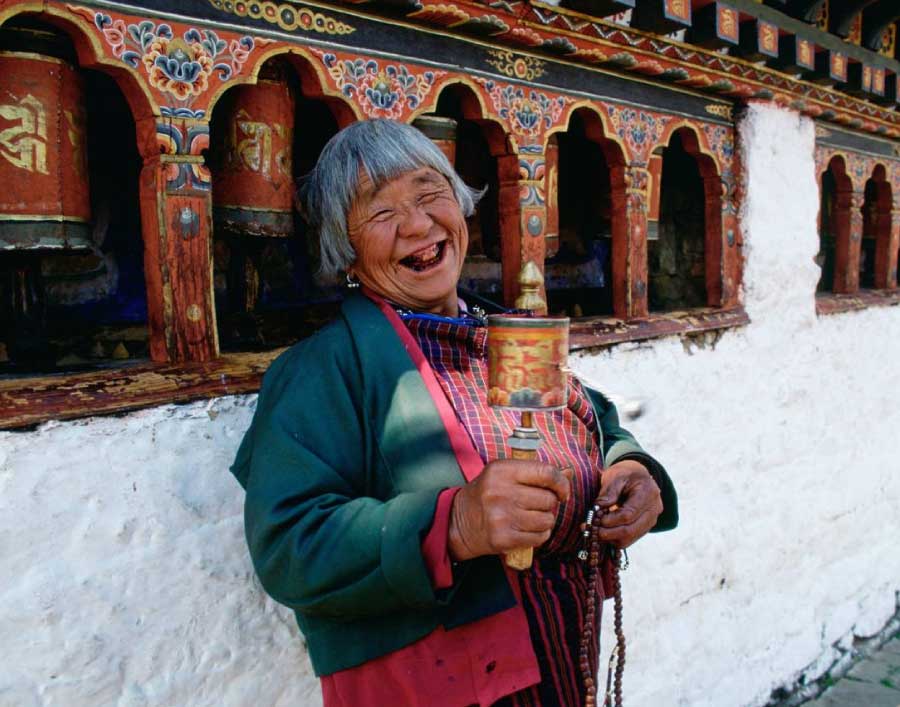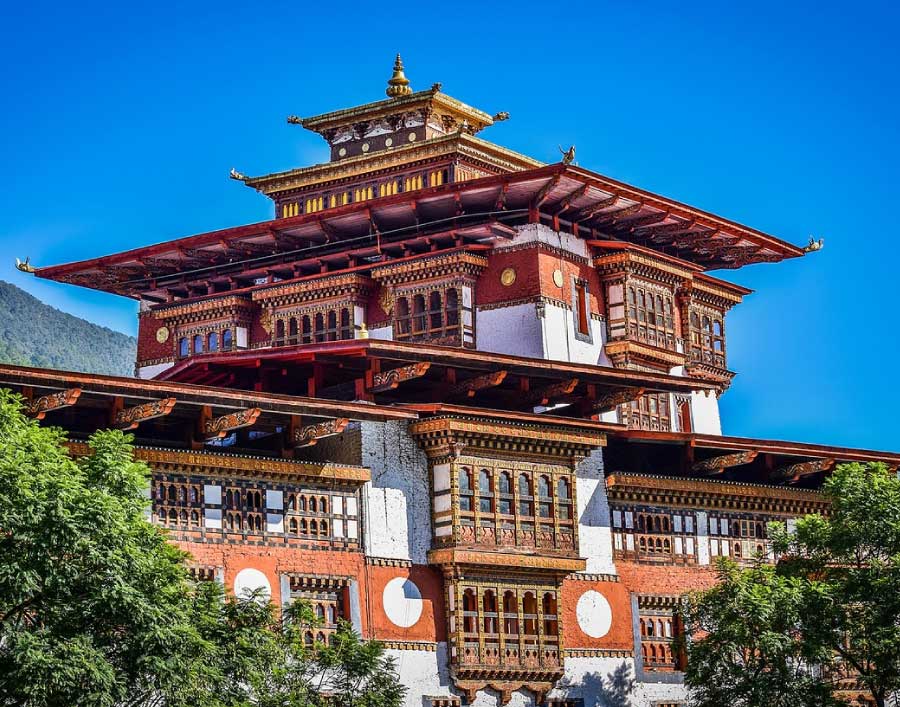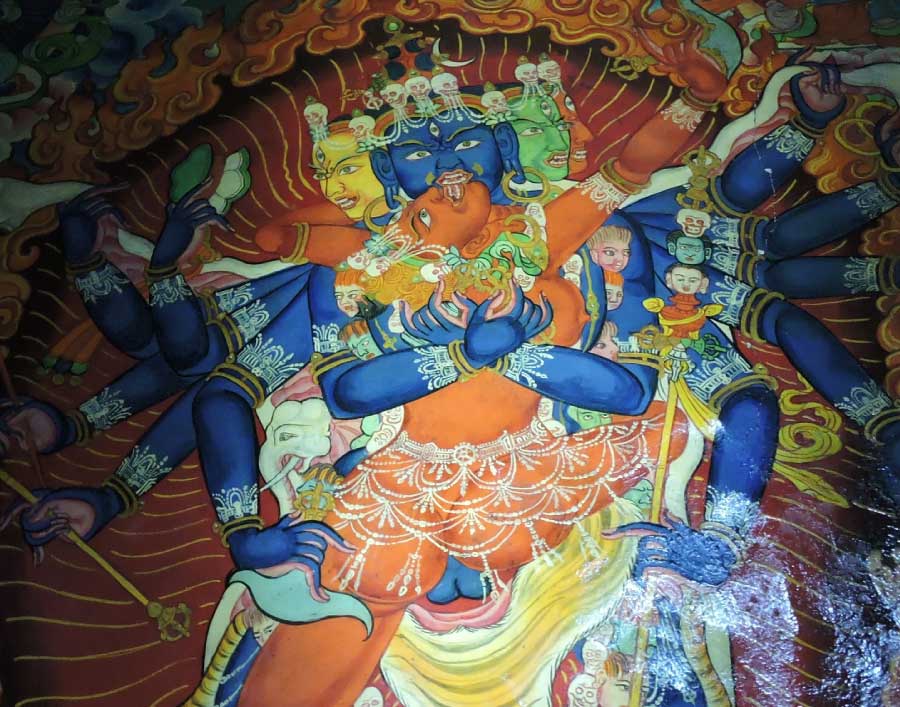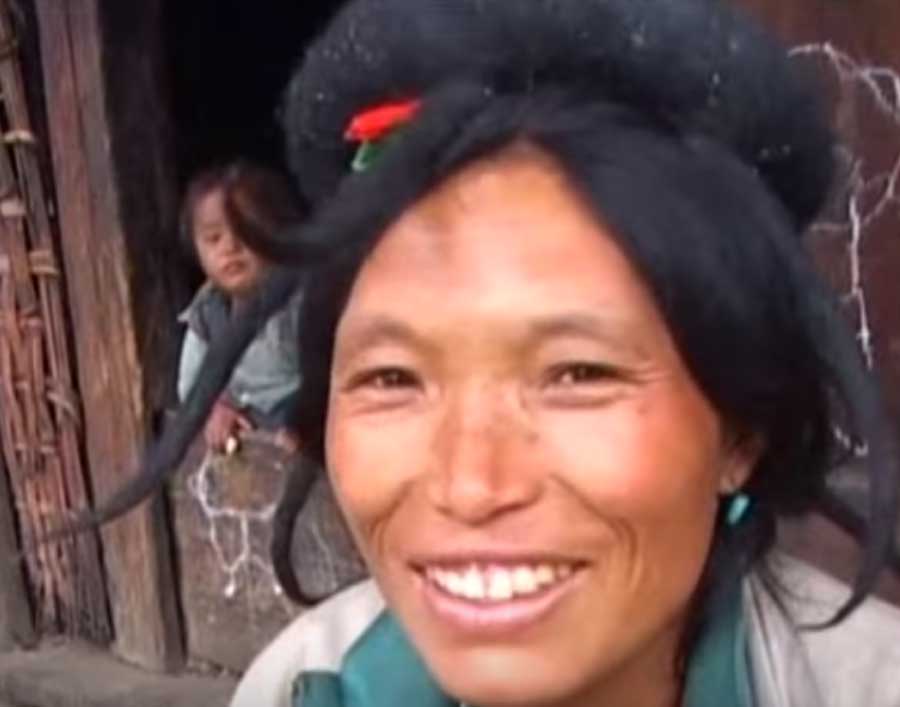
Send Me Info On The Bhutan Exploration!
Bhutan
Land of the Thunder Dragon
The photo above is the Tiger’s Nest, the Takshang Monastery in the Himalayan Kingdom of Bhutan. It is a country as close to the Shangri-La of James Hilton’s 1933 classic “Lost Horizon” as you’ll find on earth today.
Smaller than West Virginia, hidden between Tibet and the crest of the Himalayas to the steamy jungles of India, Bhutan is known as the Land of the Thunder Dragon. Independent for centuries and never colonized, Bhutan is a magic place that is spectacularly unique.
We invite you to experience the enchantment of Bhutan as only Wheeler Expeditions can provide.
Bhutan
Land of the Thunder Dragon
The photo above is the Tiger’s Nest, the Takshang Monastery in the Himalayan Kingdom of Bhutan. It is a country as close to the Shangri-La of James Hilton’s 1933 classic “Lost Horizon” as you’ll find on earth today.
Smaller than West Virginia, hidden between Tibet and the crest of the Himalayas to the steamy jungles of India, Bhutan is known as the Land of the Thunder Dragon. Independent for centuries and never colonized, Bhutan is a magic place that is spectacularly unique.
We invite you to experience the enchantment of Bhutan as only Wheeler Expeditions can provide.
The Happiest People on Our Planet
Bhutan’s culture is a unique mix of the ancient Himalayan animism called Bon and Tibetan Lama Buddhism. The Bhutanese are renowned for being among the happiest people on our planet. They pioneered the concept of a nation’s well-being not by its GDP – Gross National Product, but it’s GNH – Gross National Happiness.
As a result, there are few people on our planet more peaceful and gentle than the Bhutanese. They love to laugh, sing, dance, and play – and you’ll be invited to join them. Bhutanese happiness is infectious. One very good reason we’ll all have a happy time of our lives on our Bhutan adventure.

The Happiest People on Our Planet
Bhutan’s culture is a unique mix of the ancient Himalayan animism called Bon and Tibetan Lama Buddhism. The Bhutanese are renowned for being among the happiest people on our planet. They pioneered the concept of a nation’s well-being not by its GDP – Gross National Product, but it’s GNH – Gross National Happiness.
As a result, there are few people on our planet more peaceful and gentle than the Bhutanese. They love to laugh, sing, dance, and play – and you’ll be invited to join them. Bhutanese happiness is infectious. One very good reason we’ll all have a happy time of our lives on our Bhutan adventure.
Fabulous Architecture of Bhutan
The fabulous architecture of Bhutan is epitomized by castle-fortresses known as dzongs. They have towering external walls with elaborately painted woodwork surrounding a complex of courtyards, temples, administrative and military offices, and accommodation for lamas (Tibetan Buddhist monks).
Dzongs are the religious, social, and administrative centers for their district. We’ll be exploring the great Dzongs of Punakha, Paro, Thimphu, and Tashigang as well as numerous Lhakhangs (temples or “god-houses”) and Gompas (monasteries).

Fabulous Architecture of Bhutan
The fabulous architecture of Bhutan is epitomized by castle-fortresses known as dzongs. They have towering external walls with elaborately painted woodwork surrounding a complex of courtyards, temples, administrative and military offices, and accommodation for lamas (Tibetan Buddhist monks).
Dzongs are the religious, social, and administrative centers for their district. We’ll be exploring the great Dzongs of Punakha, Paro, Thimphu, and Tashigang as well as numerous Lhakhangs (temples or “god-houses”) and Gompas (monasteries).
The Colourful Tshechu Festival
Every Dzong in Bhutan holds an annual religious festival called a Tshechu featuring elaborately costumed and masked dancers. People from remote villages attend, large markets are set up to buy and sell local wares, and everyone joins in the fun and celebration.
One of the most colorful is the Black-Necked Crane Tshechu at the Gangtey Gompa (monastery) in Central Bhutan’s Phobjikha valley – the winter roosting ground of the migratory and rare black-necked cranes. It’s held in mid-November when the cranes return – and we’ll be there to witness the spectacular ceremony.

The Colourful Tshechu Festival
Every Dzong in Bhutan holds an annual religious festival called a Tshechu featuring elaborately costumed and masked dancers. People from remote villages attend, large markets are set up to buy and sell local wares, and everyone joins in the fun and celebration.
One of the most colorful is the Black-Necked Crane Tshechu at the Gangtey Gompa (monastery) in Central Bhutan’s Phobjikha valley – the winter roosting ground of the migratory and rare black-necked cranes. It’s held in mid-November when the cranes return – and we’ll be there to witness the spectacular ceremony.
Ancient Ways and Practices
The form of Tibetan Buddhism practiced in Bhutan is known as Tantra. In the temples and monasteries we visit, we will see in wall paintings and statues the Yab-Yum physical union of Wisdom and Compassion. Wisdom is personified as the deity Samvara with a blue body, four faces, and twelve arms. He embraces his consort of compassion Vajaravarahi.
From our Western perspective, this is as exotic as it gets. It is important to understand that Yab-Yum is considered a sacred act. It is just one example of how Bhutan may stretch our comfort zone to learn ancient ways and practices, giving us a broader perspective on our humanity.

Ancient Ways and Practices
The form of Tibetan Buddhism practiced in Bhutan is known as Tantra. In the temples and monasteries we visit, we will see in wall paintings and statues the Yab-Yum physical union of Wisdom and Compassion. Wisdom is personified as the deity Samvara with a blue body, four faces, and twelve arms. He embraces his consort of compassion Vajaravarahi.
From our Western perspective, this is as exotic as it gets. It is important to understand that Yab-Yum is considered a sacred act. It is just one example of how Bhutan may stretch our comfort zone to learn ancient ways and practices, giving us a broader perspective on our humanity.

The “Spider People”
We’ve been to the Tiger’s Nest cliff monastery, the temples and wonders of the twin capitals of Punakha and Thimphu, in Western Bhutan. Now we venture to remote and rarely-visited Eastern Bhutan to meet the country’s most unique people, the Brokpa – semi-nomadic yak herders living very traditionally in hidden roadless valleys. Called the “spider people” for their yak felt hats with twisted tufts to prevent rain from running into their faces, spending time with them will be life-memorable. A fitting finale for our exploration of the Land of the Thunder Dragon.